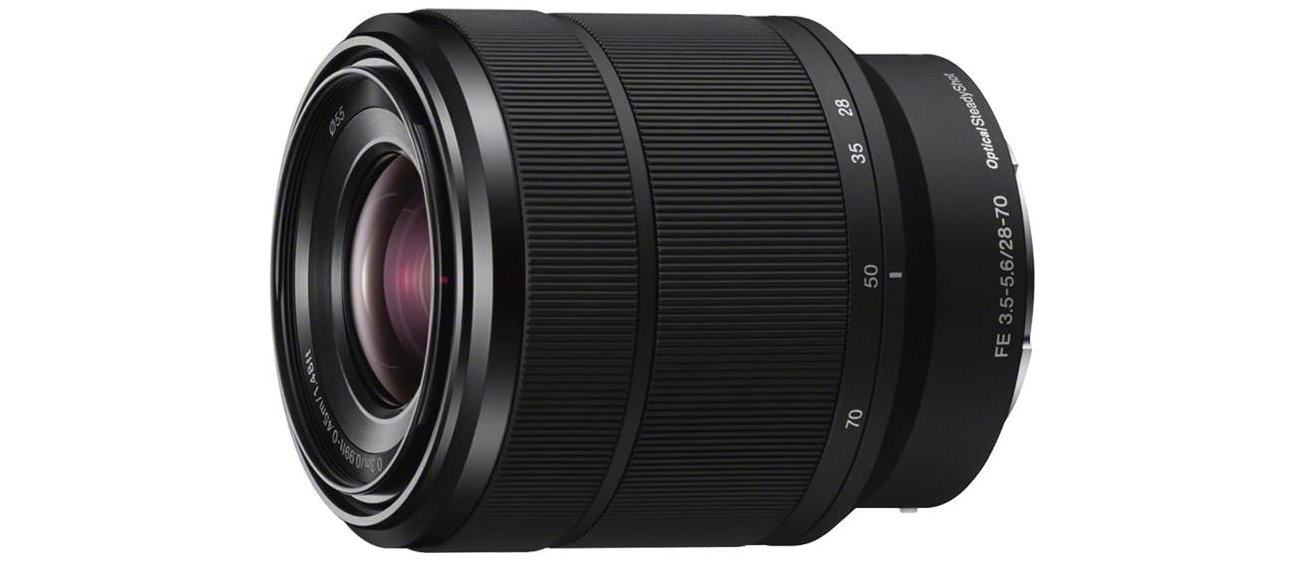Digital Camera World Verdict
A good budget option, this lens is compact, lightweight and relatively affordable for an own-brand Sony standard zoom. With fast autofocus and 3-stop optical stabilization, it ticks all the right boxes for casual, everyday shooting and travel photography, although the maximum field of view is naturally more restrictive than with Sony’s 24-70mm lenses, and the long-zoom aperture rating of f/5.6 is comparatively slow.
Pros
- +
Compact and lightweight
- +
3-stop optical stabilization
- +
Relatively inexpensive
Cons
- -
Modest aperture rating
- -
Basic handling
- -
Heavy pincushion distortion
Why you can trust Digital Camera World
There’s been a big uptake of the Sony FE 28-70mm f/3.5-5.6 OSS, largely because it’s a popular kit lens option with Sony’s full-frame mirrorless cameras. It’s pretty compact and lightweight for a full-frame compatible standard zoom lens, at 73x83mm and 295g, despite lacking a retractable design. It also includes a 3-stop optical stabilizer, which comes in very handy on first-generation A7-series cameras that lack in-body stabilization.
Specifications
Mount: Sony E (FE)
Sony model number: SEL2870
Full-frame: Yes
Autofocus: Yes
Stabilisation: Yes
Lens construction: 9 elements in 8 groups
Angle of view: 75-34 degrees
Diaphragm blades: 7
Minimum aperture: f/22-36
Minimum focusing distance: 0.3-0.45m
Maximum magnification ratio: 0.19x
Filter size: 55mm
Dimensions: 73x83mm
Weight: 295g
Key features
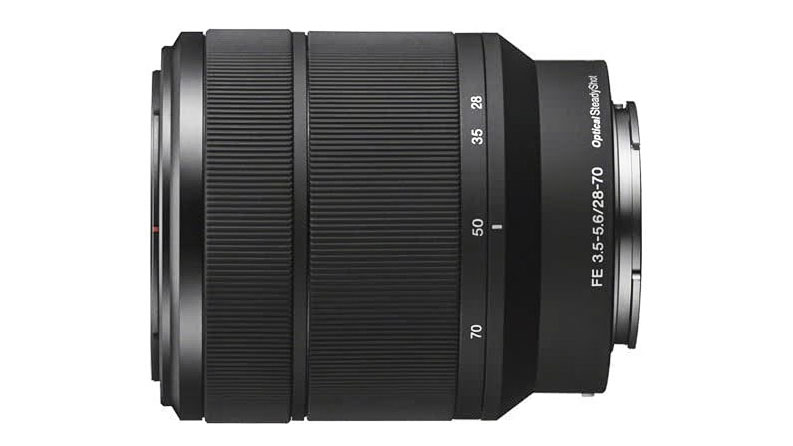
The compact and lightweight construction of this lens makes it ideal for everyday and travel shooting, backed up by optical stabilization for consistently sharp handheld results, even on early Sony Alpha mirrorless cameras the don’t have IBIS. Rain needn’t stop play either, as the lens features weather-seals, although it doesn’t have a rubber gasket on the mounting plate.
The optical path features three aspherical elements and one ED (Extra-low Dispersion) element, while the autofocus system is quick and quiet, based on a linear stepping motor. The minimum focus distance is a mere 0.3m at the short end of the zoom range, rising to 0.45m at the long end. The zoom and focus rings operate smoothly but there’s no AF/MF switch, the lens instead relying on the use of in-camera menus. The aperture is controlled by a 7-blade diaphragm which is reasonably well-rounded.
Performance
With quick autofocus and effective optical stabilization, the lens performs well overall. Levels of sharpness are very acceptable across the whole image frame at most combinations of focal length and aperture, although corner-sharpness drops off at the short end of the zoom range, at apertures wider than f/5.6. Color fringing is well controlled but pincushion distortion is heavy in the 50-70mm sector of the zoom range, when uncorrected.
Lab results
We run a range of lab tests under controlled conditions, using the Imatest Master testing suite. Photos of test charts are taken across the range of apertures and zooms (where available), then analyzed for sharpness, distortion and chromatic aberrations.
We use Imatest SFR (spatial frequency response) charts and analysis software to plot lens resolution at the center of the image frame, corners and mid-point distances, across the range of aperture settings and, with zoom lenses, at four different focal lengths. The tests also measure distortion and color fringing (chromatic aberration).
Sharpness:
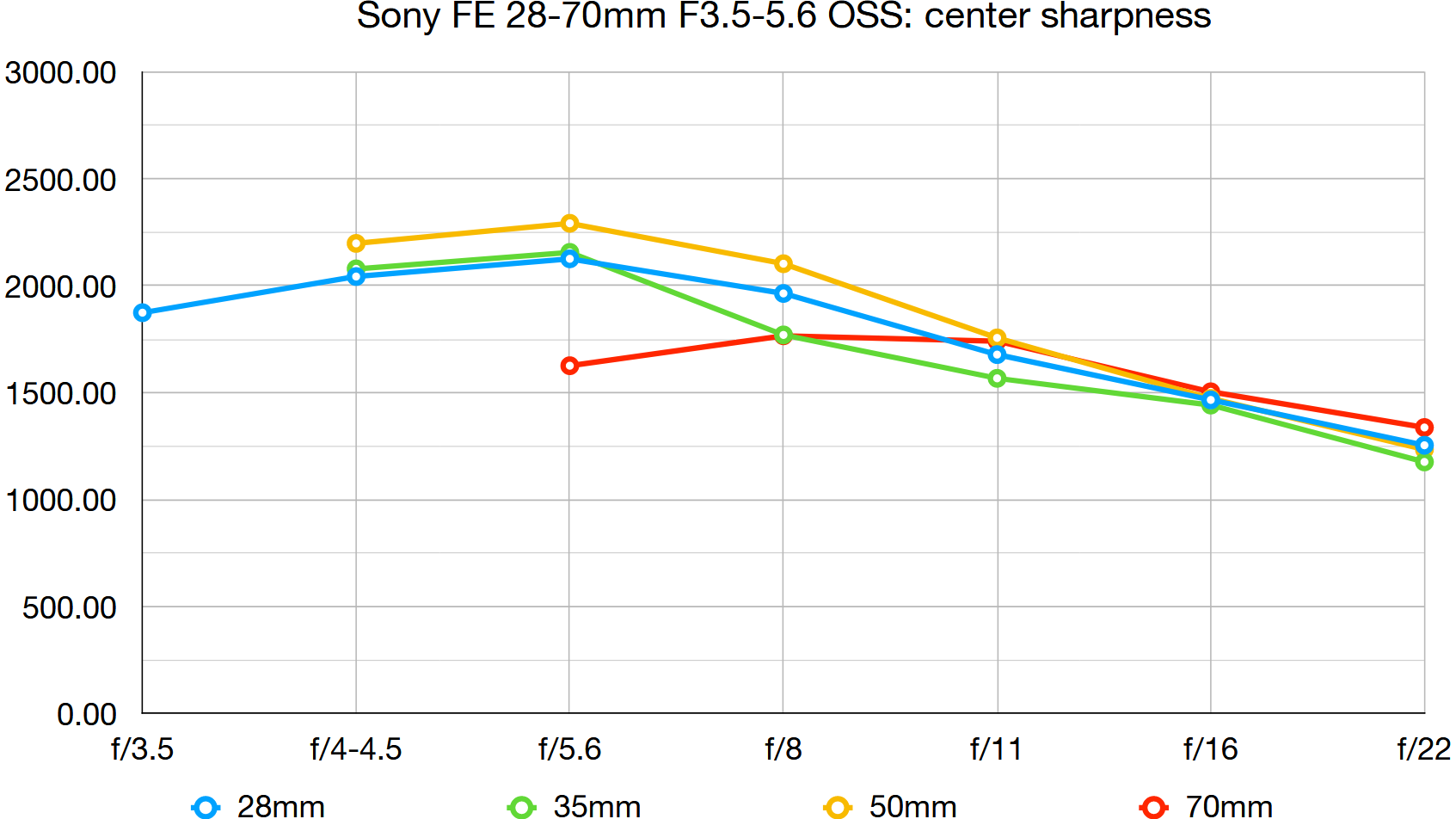
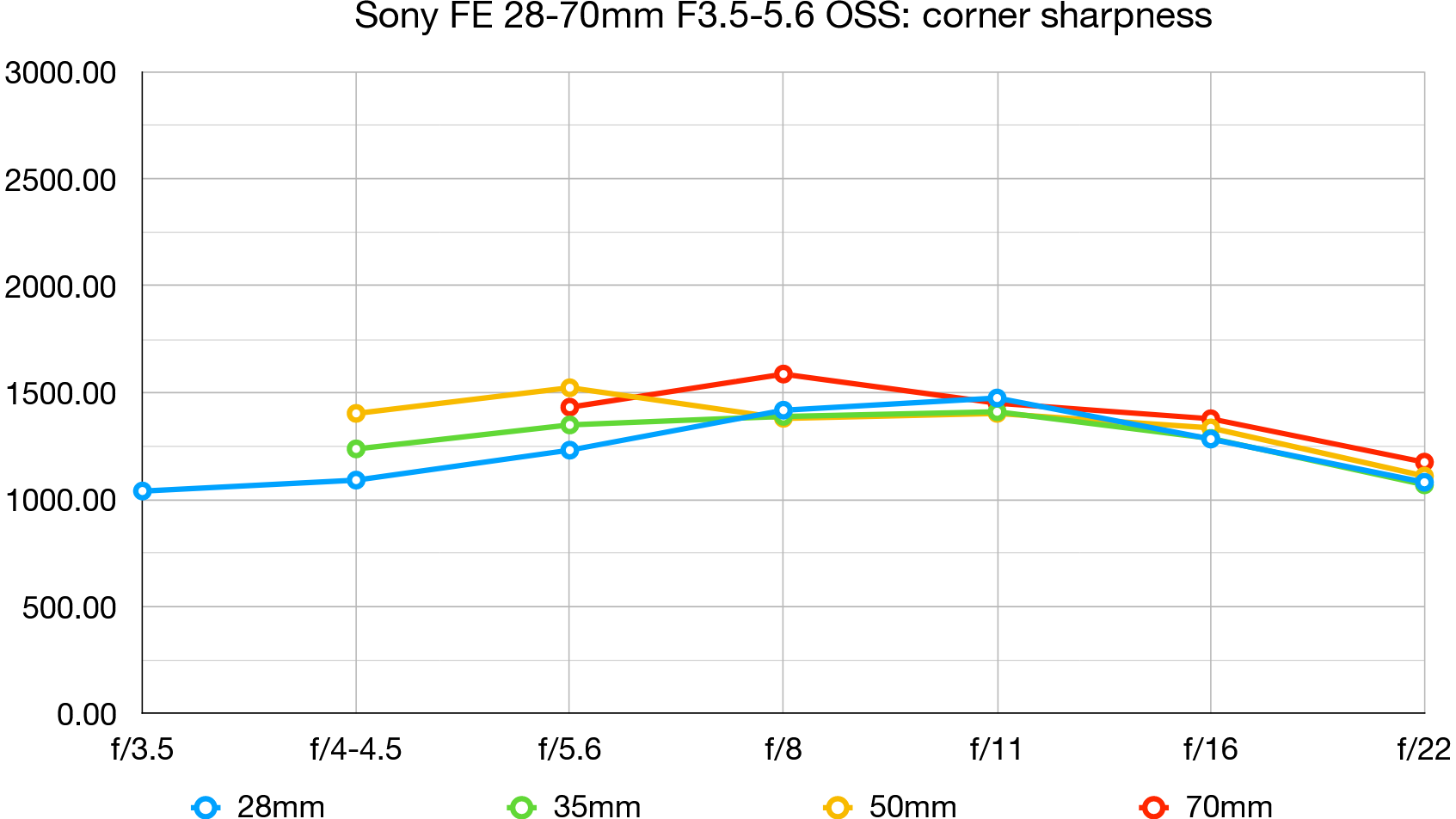
Sharpness is good overall although center-sharpness drops off a bit at the long end of the zoom range and the same goes for corner-sharpness at the short end.
Fringing:

There’s very little color fringing throughout the entire zoom range, even at the extreme edges and corners of the frame.
Distortion:
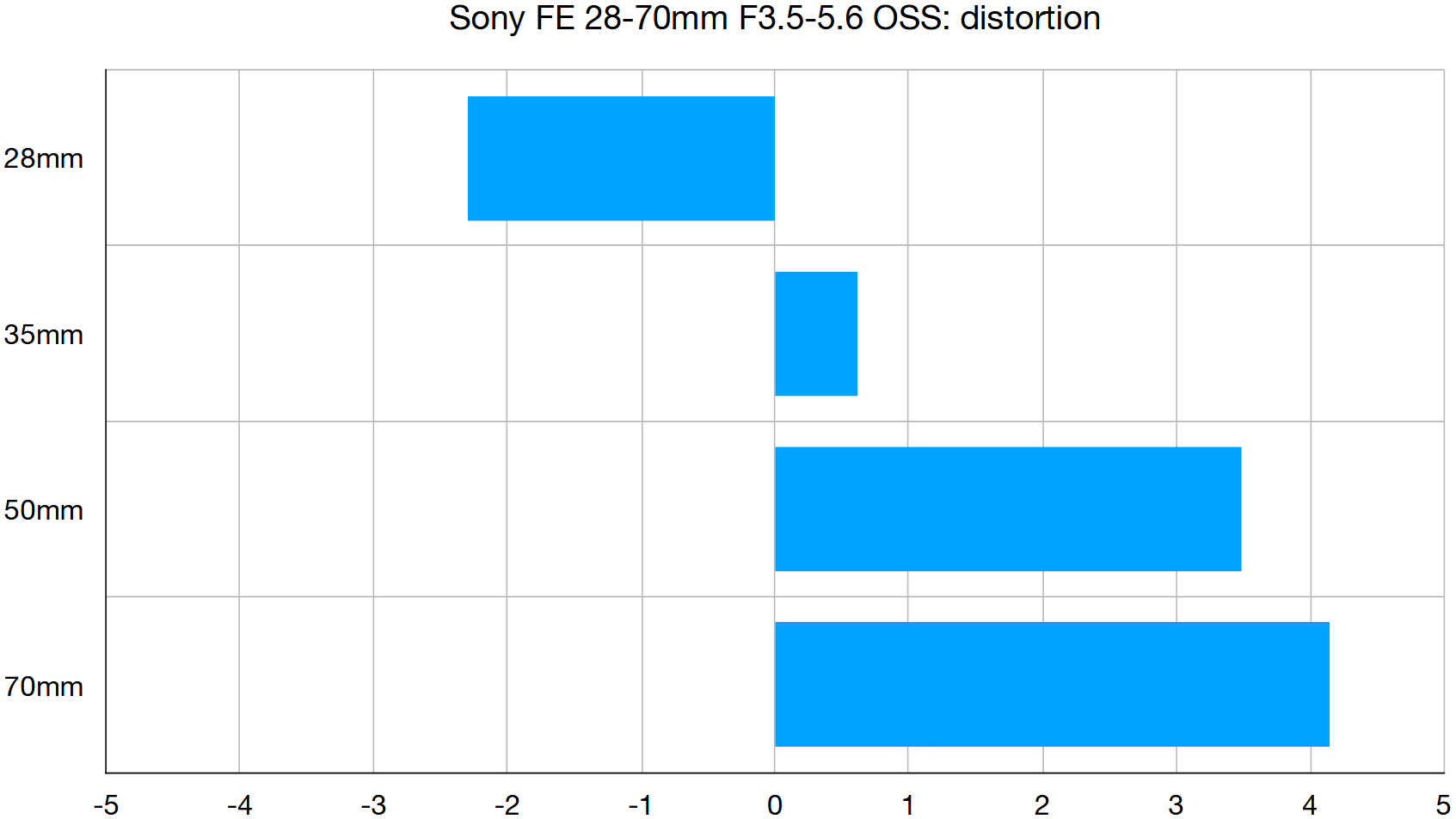
Barrel distortion can be noticeable at 28mm, while pincushion distortion is quite severe at focal lengths from 50mm to 70mm. On the plus side, automatic corrections are available in-camera, and when processing RAW files.
Verdict
A good budget option, this lens is compact, lightweight and relatively affordable for an own-brand Sony standard zoom. With fast autofocus and 3-stop optical stabilization, it ticks all the right boxes for casual, everyday shooting and travel photography, although the maximum field of view is naturally more restrictive than with Sony’s 24-70mm lenses, and the long-zoom aperture rating of f/5.6 is comparatively modest.
Read more:
• Best camera lenses to get
• Best Canon lenses
• Best Nikon lenses
• Best Sony lenses
Matthew Richards is a photographer and journalist who has spent years using and reviewing all manner of photo gear. He is Digital Camera World's principal lens reviewer – and has tested more primes and zooms than most people have had hot dinners!
His expertise with equipment doesn’t end there, though. He is also an encyclopedia when it comes to all manner of cameras, camera holsters and bags, flashguns, tripods and heads, printers, papers and inks, and just about anything imaging-related.
In an earlier life he was a broadcast engineer at the BBC, as well as a former editor of PC Guide.
